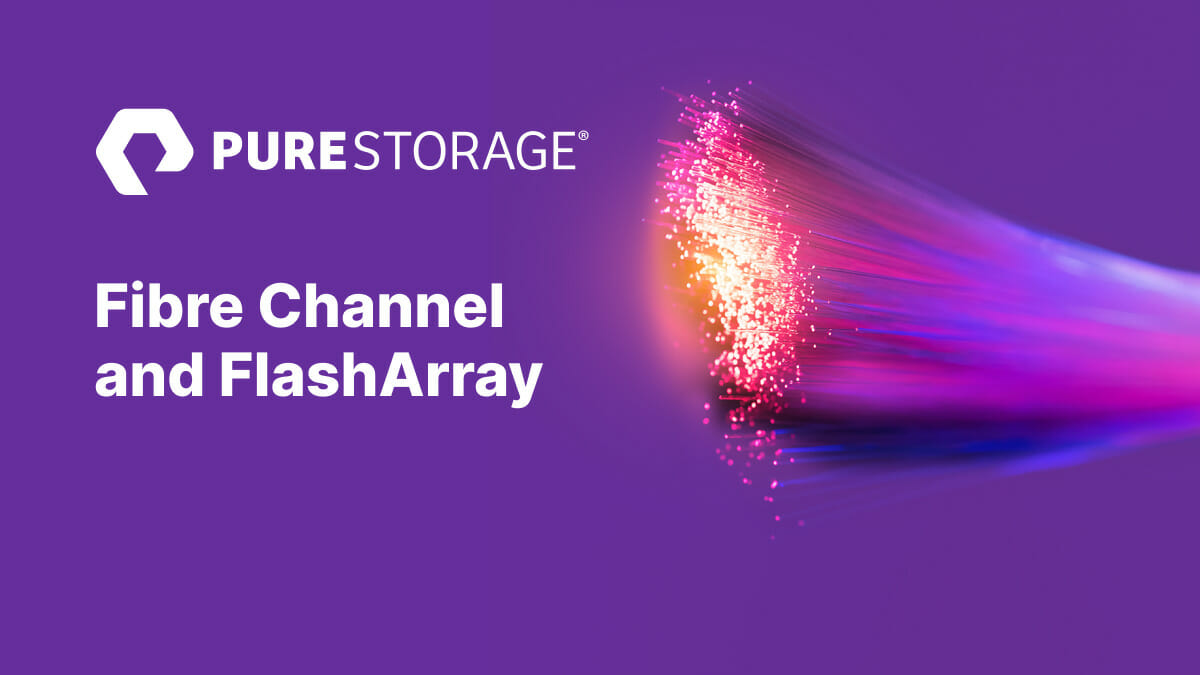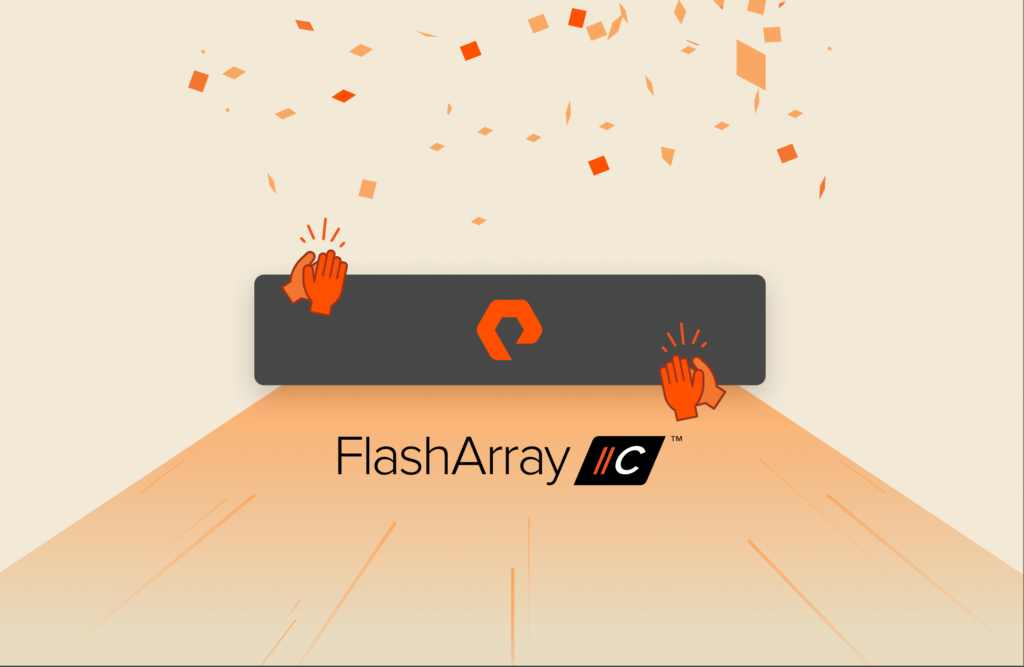Fibre Channel has a long history in the enterprise storage market, and yet it’s continually being enhanced to better accommodate the needs of the enterprise. Pure Storage is excited to introduce several new standards-based features in our Fibre Channel offering.
64GFC Fibre Channel Support
With the 6.3.0 Purity release, Pure will support 64GFC Fibre Channel on FlashArray//XL arrays, doubling the maximum Fibre Channel port data rate to 6,400 megabytes per second. This upgrade requires only an SFP upgrade for existing FlashArray//XL customers—the Fibre Channel HBAs in FlashArray//XL arrays already support the higher data rate.
With 64GFC Fibre Channel to the array, customers can potentially reduce the number of physical connections they would need to use by half compared to the previous generation of 32GFC. As a result, cabling is simplified. Initiator HBA and Fibre Channel switch vendors are already supporting 64GFC technology.
Fibre Performance Impact Notification (FPIN)
Fibre Channel is more than just speeds and feeds, though. Pure Support engineers need to be able to quickly diagnose problems on the SAN when issues occur.
In our 6.3.0 software release, Pure will start logging FPIN events and make them visible to Pure Support personnel. FPIN events represent problems in the SAN. For many of the problems customers encounter, Pure Support engineers need information about the state of the entire SAN, not just what is visible at the array, to diagnose the issue. Prior to FPIN logging, customers had to capture logs from the switch and initiator and manually send them to us. We’d then take that data and combine it with logs present in the array.
With FPIN, devices in the SAN will send state information to the switch. Any device in the Fibre Channel zone that has subscribed to receive FPIN data will receive a broadcast message from the switch. Some devices may choose to act on it. For example, if a link between the switch and the array is bad, a multipath driver on the initiator can respond by rerouting data across a different link to the array.
In another example, CRC errors might indicate that a switch has received a corrupted Fibre Channel frame from the server due to bad cabling. Although this is visible at the switch, this wouldn’t be immediately visible to Pure’s Support engineers. The customer may see only high latency from the initiator as the commands are tried again. With FPIN, the switch will generate an event to FPIN subscribers; the array will log this event and help Pure’s engineers identify the problem.
Another common issue that’s difficult to debug at the array is congestion. Congestion can occur in the array due to device errors, a mismatch of ingress and outgress data rates in a SAN, or other issues. However, it’s often difficult to pinpoint the source of the problem. Customers will see less than expected performance, and Pure’s Support team will get involved. The Fibre Channel switch is in a better position to detect congestion and can send FPIN events when it detects this condition.
FPIN logging is supported on Pure’s FlashArray//XR2 and newer arrays with firmware 6.3.0. It requires a switch that supports FPIN. Both Fibre Channel switch vendors support FPIN with recent firmware.
For more information, check out this presentation by the Fibre Channel Industry Association.
Fibre Channel-NVMe (FC-NVMe) Operating Systems
Finally, Pure recently qualified our FC-NVMe protocol for use on the AIX operating system. AIX was the last major operating system with native FC-NVMe support that Pure didn’t support and we’re pleased to have completed this work. Pure is already qualified for use on Red Hat Enterprise Linux, SUSE Linux Enterprise Server, and VMware vSphere.

Written By:
More Performance, Less Space
un your most demanding apps and massive databases at the next level on fewer arrays.






